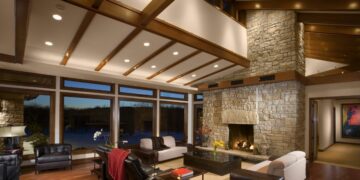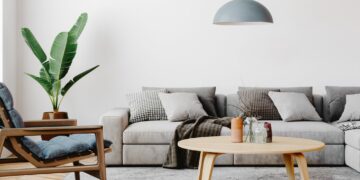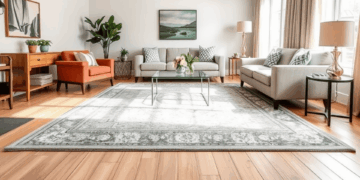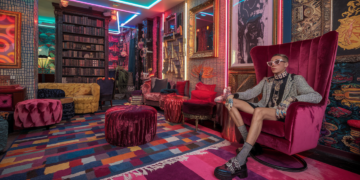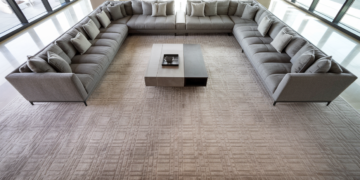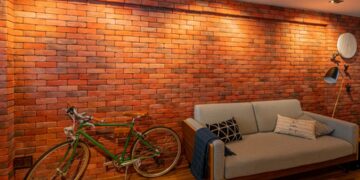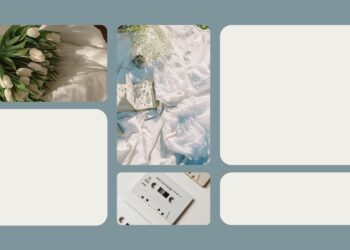Texture is an essential element in interior design. It adds depth, warmth, and character to a space, making it feel inviting and well-balanced. Every material, from soft fabrics to rough wood, contributes to the overall atmosphere.
A room without texture can appear flat and lifeless. The right mix of smooth and rough surfaces, light and heavy materials, creates contrast and interest.
Texture also affects how light interacts with a space, influencing its mood and perception. By understanding texture, you can make any space feel more dynamic and comfortable.
This guide will take you through different types of textures, their effects, and practical ways to use them in home decor. Small changes in texture can transform the entire look and feel of a room.
Understanding Texture in Interior Design
Texture goes beyond how things feel—it shapes the entire experience of a room. Either you notice it or not, texture influences comfort, style, and even the perception of space. It adds life to surfaces, making them look and feel more interesting.
The right balance of texture brings energy and movement to interiors. It makes the difference between a plain space and one that feels thoughtfully designed.
What Texture Means in Home Decor
Texture refers to how surfaces feel or appear in your home. Some textures are tangible, like soft cotton or rough stone, while others are visual, like a patterned wallpaper that looks three-dimensional.
Every surface, from flooring to furniture, carries texture that contributes to your space’s character. Mixing these creates layers that add interest without clutter.
Even a simple color scheme feels complete when textures vary. Texture keeps your space from feeling empty, making every corner feel designed and welcoming for daily living.
The Role of Texture in Shaping a Space
Texture helps set the tone and personality of your space, giving it emotional depth and visual appeal.
Soft materials like wool throws or velvet cushions bring warmth and comfort, perfect for cozy spaces like living rooms and bedrooms.
In contrast, sleek surfaces like glass or metal add a modern, clean vibe, reflecting light and creating an airy feel. Rough textures, like raw wood or stone, ground the space, giving it a natural, earthy atmosphere.
Mixing these textures adds depth and interest, drawing the eye around the room, making it feel fuller and more thoughtfully designed.
How Texture Affects Mood and Perception
Texture plays a significant role in how we perceive the mood and feel of a room.
- Warmth vs. Coolness: Soft fabrics and natural materials make a room feel inviting, while glass and polished stone create a cooler ambiance.
- Depth and Dimension: A mix of textures prevents a space from looking flat or dull.
- Light Reflection: Smooth textures reflect more light, making spaces appear larger, while rough surfaces absorb light, adding a sense of intimacy.
Types of Texture
Texture can be classified into two main types: tactile and visual. Each type plays a distinct role in how a space feels and looks, contributing to its overall atmosphere and design.
Tactile Texture
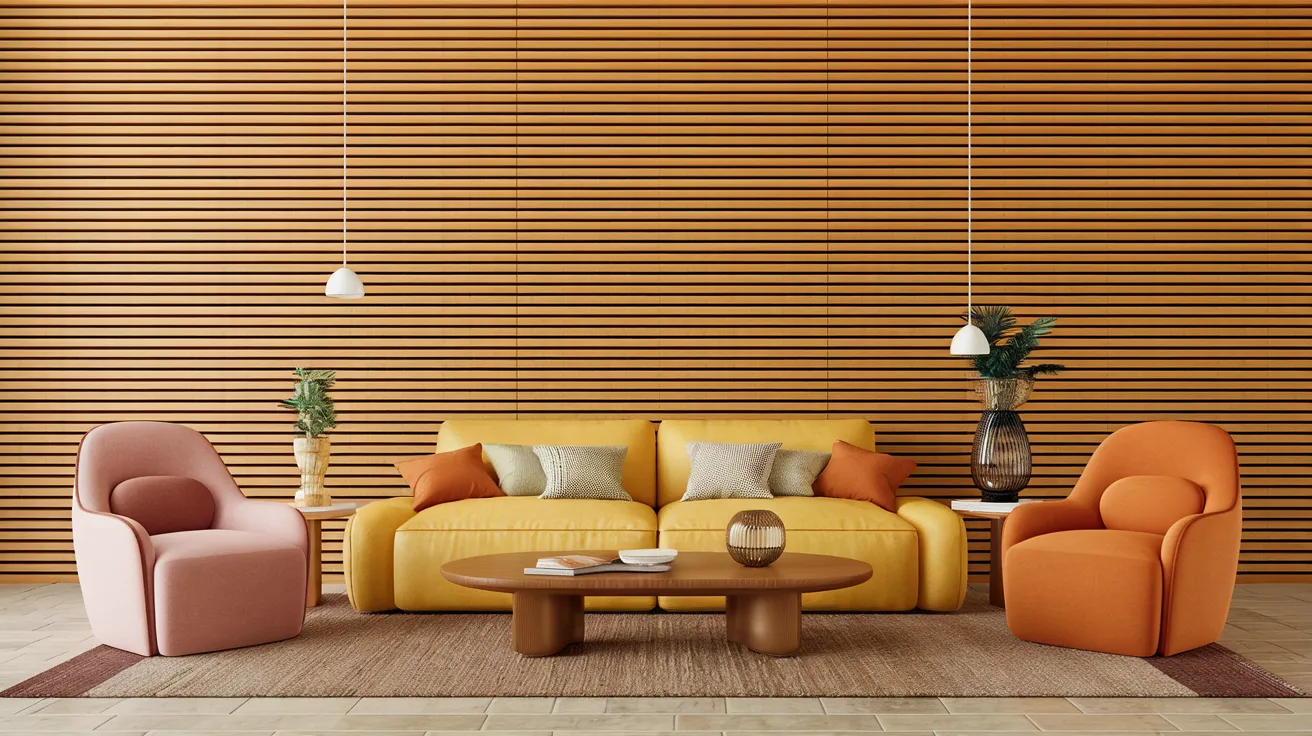
Tactile texture refers to how a material feels to the touch. It is the physical quality that you experience with your hands, whether it’s the smoothness of glass, the roughness of brick, or the softness of velvet. These textures provide sensory appeal and are often used in furniture, fabrics, and flooring.
Tactile textures add warmth and depth to a space, making it feel more inviting and comfortable.
Materials like grainy wood or plush textiles evoke different emotional responses, such as warmth, comfort, or a feeling of luxury.
Visual Texture
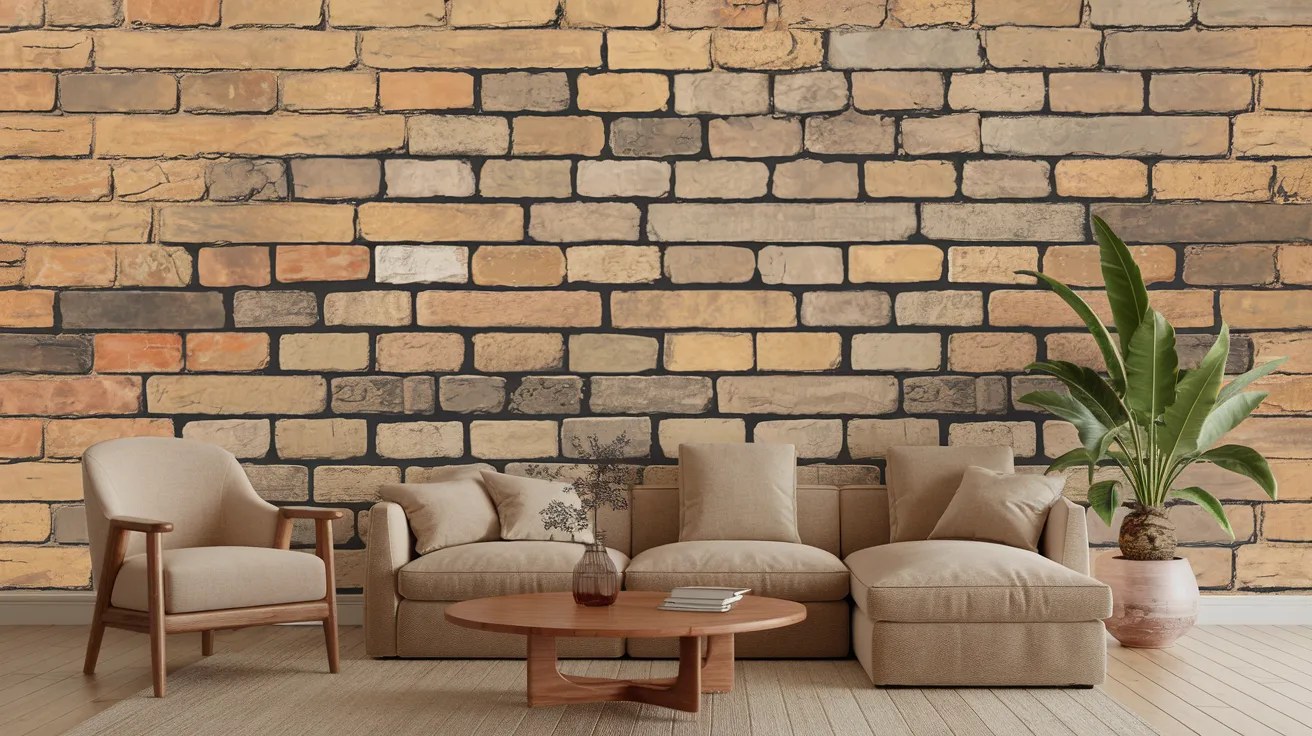
Visual texture refers to how a surface appears, even if it doesn’t physically feel that way. It’s the illusion of texture created through patterns, colors, and design elements.
Examples of visual textures include faux wood wallpaper, printed fabrics, or layered tile patterns. These textures don’t invite physical interaction, but they still create visual depth and contrast.
By introducing visual textures, you can make a space feel more dynamic and engaging, providing visual interest and enhancing the design without altering the tactile experience of the room.
Why Texture Matters in Interior Design
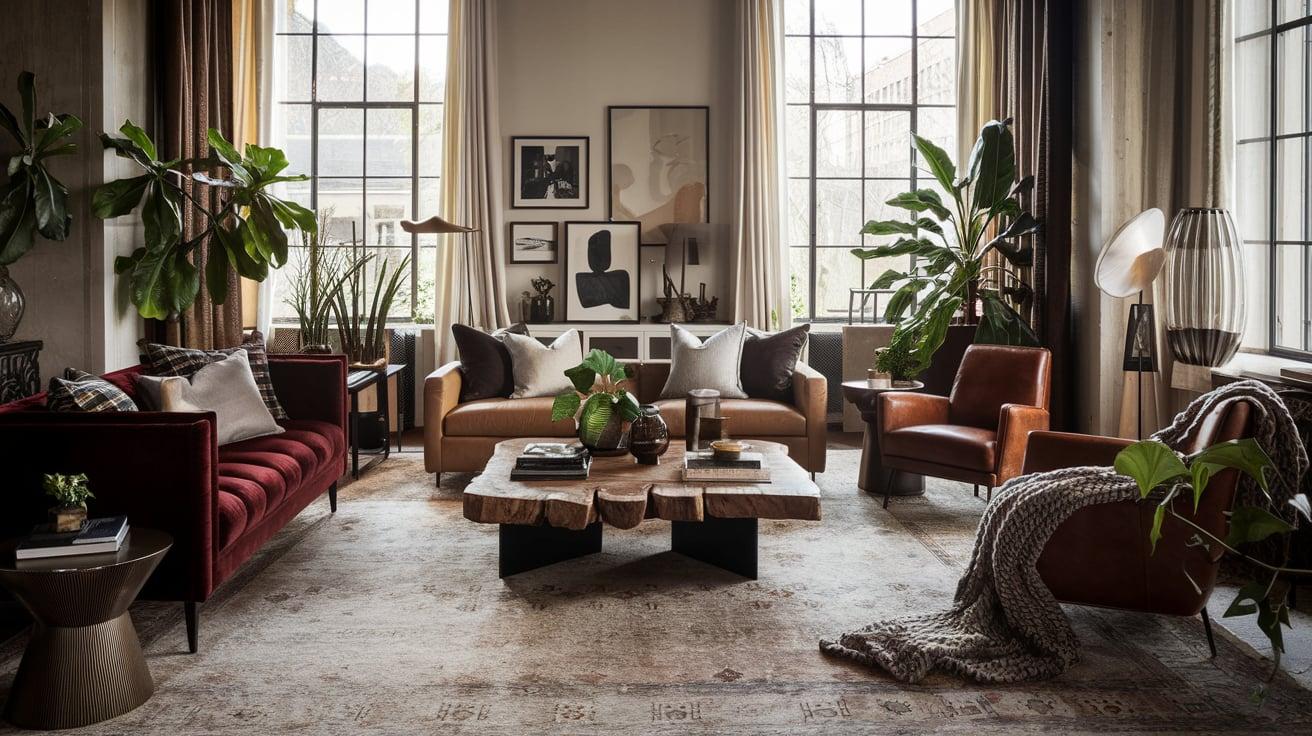
Creates Depth and Dimension
Texture is essential for adding depth to a room. Without it, the space can feel flat and lifeless. Mixing different textures, such as rough fabrics with smooth surfaces, creates contrast.
The contrast adds visual interest and makes the room feel more dynamic. The combination of textures makes the space feel fuller and richer. It also invites the eye to explore different areas of the room.
By layering textures, you bring the room to life and create a more inviting atmosphere, keeping the space visually engaging.
Adds Warmth or Coolness to a Space
Texture can influence a room’s temperature. Soft, plush textures, like velvet or wool, create warmth and coziness. They make a space feel inviting and comfortable.
Conversely, sleek materials like metal or glass bring a cooler, more modern feel and lend a fresh, airy vibe to the space.
Finding a balance between warm and cool textures helps set the desired tone for the room. This balance impacts the overall mood and atmosphere, influencing how the room makes you feel.
Improves Light Reflection and Absorption
Different textures affect how light interacts with a room. Smooth surfaces reflect light, making the space brighter and larger.
For example, polished stone or glass will help bounce light around the room. In contrast, rough or matte textures absorb light, creating a more intimate, cozy feel.
Textures like wood or fabric can create warmth by absorbing light. By adjusting textures, you can control how light moves through the room. This can drastically change the mood and perception of a space, making it feel more open or cozy.
Ways to Add Texture to Your Home
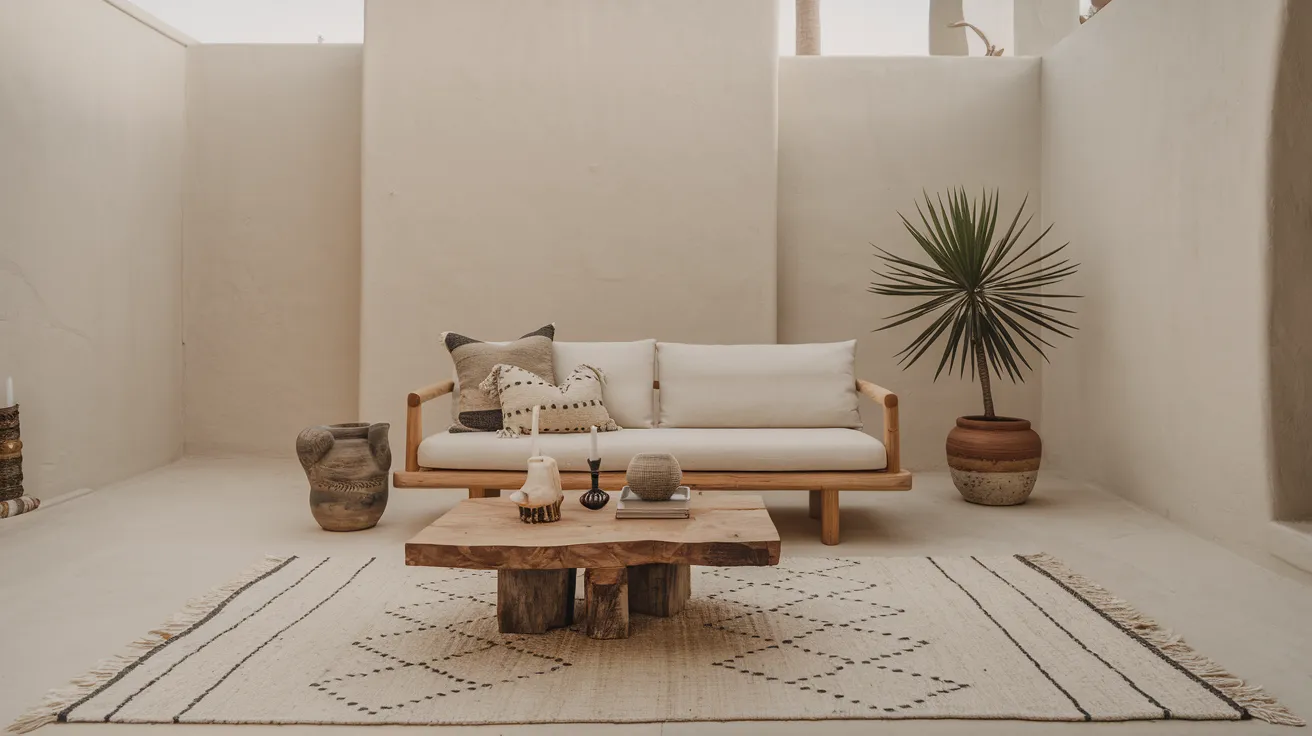
Incorporating different textures into your space can make a big difference in how the room feels.
By layering materials, mixing fabrics, and adding textured furniture, you can create a space that feels dynamic, inviting, and visually interesting.
Layering Different Materials
Combining soft and hard textures adds richness and depth to a room. Layering different materials, such as a plush wool rug with a sleek leather sofa, creates contrast, keeping the space visually interesting.
For example, pairing a textured stone backsplash with soft fabric cushions brings both visual appeal and tactile pleasure.
By using different materials in your design, you add dimension to the space, making it feel more dynamic. This layering technique prevents the room from feeling flat and balances the aesthetic and functional aspects of the design.
Contrasting Fabrics
Mixing smooth and rough fabrics adds variety and balance to the space. For example, combining a soft linen throw with a velvet pillow can create a beautiful contrast that feels both inviting and luxurious.
Similarly, pairing a smooth cotton curtain with a rough-hewn wooden bench introduces texture variety. The contrast between soft and firm textures improves the room’s visual and tactile appeal.
By using fabrics with varying textures, you create layers of interest that make the space feel more dynamic and appealing to the senses.
Textured Furniture
Furniture made from materials like wood, metal, and upholstery can significantly influence a room’s texture. A wooden coffee table brings an earthy, natural texture, while a velvet armchair adds softness and warmth.
A metal-framed bed introduces a cool, industrial feel. These textures not only make the space visually engaging but also invite physical touch, adding warmth or coolness depending on the material.
Textured furniture pieces serve as functional art, allowing you to create a unique atmosphere and enhance the overall design of your space.
Decor and Accessories
Using decor items like vases, sculptures, and mirrors with different textures can add layers to a room. For example, a glossy ceramic vase paired with a textured metal sculpture creates contrast and visual interest.
A wooden-framed mirror can complement both elements while introducing more texture variety. Accessories such as these help create a layered, cohesive look in a room.
However, be mindful of balancing the textures—too many contrasting materials can overwhelm the space. The key is to select accessories that harmonize with the room’s overall design and maintain a consistent feel.
Plants and Flowers
Bringing in plants and flowers introduces natural textures that add both visual and tactile appeal. For example, the smooth, shiny leaves of a fern contrast beautifully with the rough texture of a ceramic pot.
A delicate floral arrangement can add softness and movement to the room. By selecting plants and flowers that complement the space’s existing textures, you create a seamless connection between nature and interior design.
Plants not only improve the art value but also promote a sense of calm and well-being in the room.
Lighting and Shadows
Lighting plays a key role in how texture is perceived. Proper lighting can bring out the beauty of textured surfaces, creating intriguing highlights and shadows.
Soft, diffused light can help soften rough textures like stone or wood, making them feel warmer and more inviting. On the other hand, directional lighting can accentuate the details in textured fabrics or materials, making them stand out.
By adjusting lighting based on the room’s textures, you can enhance the overall feel, adding depth and warmth or creating a more dramatic atmosphere.
Balancing Textures for a Cohesive Look
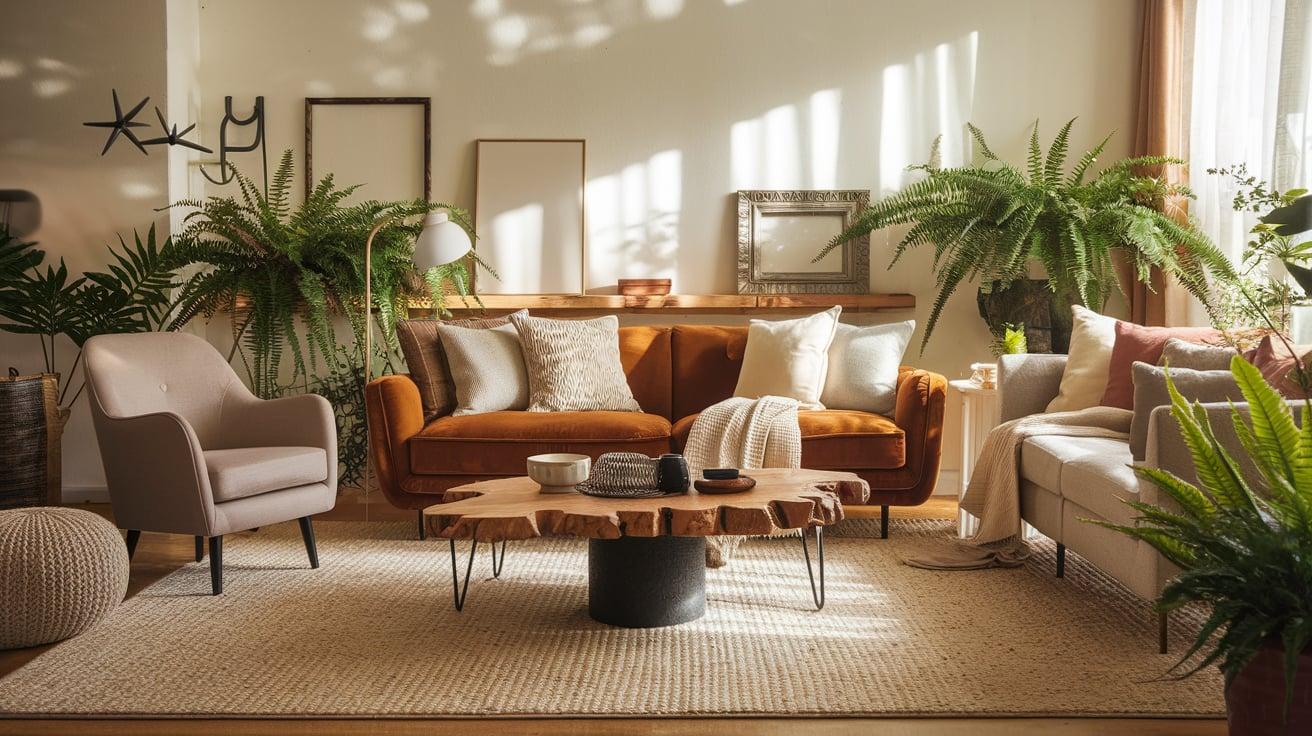
Matching Different Textures for Harmony
It’s important to ensure that the textures in a room complement each other to create a cohesive look. While contrast can be interesting, too many competing textures can create chaos.
Aim for a balance where rough, smooth, soft, and hard textures work together to support the overall style.
For example, if you have a rugged wooden coffee table, pair it with plush cushions and a sleek metal lamp to maintain harmony.
The Role of Color and Pattern in Texture Choices
Color and pattern play a significant role in how textures interact. The accompanying color scheme can improve or soften the texture.
For instance, neutral colors like beige, gray, or white allow textures to stand out, while bold, vibrant colors might distract from the texture itself.
Patterns, too, can work in harmony with textures—striped fabrics can complement smooth textures like glass or ceramics, while intricate patterns pair well with subtle textures.
Adjusting Texture for Small and Large Spaces
Texture can visually alter the perception of space. In larger rooms, you can afford to use heavier, more pronounced textures like leather or wood without overwhelming the space.
For smaller rooms, opt for lighter textures, such as sheer fabrics or smooth surfaces, to prevent the space from feeling cluttered.
Additionally, in tight spaces, consider using uniform textures to maintain a sense of openness and flow, while larger areas can handle a mix of textures for added depth.
Practical Tips for Using Texture
Texture plays a key role in creating balanced, inviting spaces.
By thoughtfully selecting textures and considering their impact on the atmosphere, you can improve both the look and feel of any room. These practical tips will help you effectively use texture.
Choosing the Right Textures for Each Room
Each room in your home has different needs, and texture can help fulfill those.
Softer textures like velvet, cotton, and wool are perfect for creating comfort and warmth in living rooms and bedrooms. Kitchens and bathrooms, on the other hand, benefit from more durable textures like stone, tile, and stainless steel.
Consider the function of the room and the feeling you want to evoke when selecting materials.
Seasonal Texture Changes
Textures can be updated to match the seasons, offering a fresh look and feel throughout the year.
For example, in the summer, light and airy fabrics like linen or cotton work well, while in the winter, heavier materials like velvet or faux fur add warmth and coziness.
Changing throws, pillows, and curtains with the seasons can easily refresh your space without major renovations.
Avoiding a Cluttered or Mismatched Look
While mixing textures adds interest, it’s important to avoid overwhelming a space. Stick to a few key textures that complement each other and maintain a consistent theme.
Too many competing textures can make a room feel chaotic. For a balanced look, choose textures that vary in scale but not in their overall tone or style.
For example, pair a soft wool throw with a sleek leather chair, but avoid overloading the space with multiple bold textures.
Final Thoughts
Texture plays a crucial role in bringing depth and character to interior design. It creates contrast, adds warmth or coolness, and improves the visual appeal of a space.
Small changes, such as adding a textured rug or changing fabric cushions, can significantly impact a room’s feel. Thoughtful texture choices help create inviting, balanced spaces that are both functional and stylish.
By combining the right textures, you can make a room feel dynamic, cozy, and well-designed, turning any space into a more enjoyable and visually engaging environment.
Frequently Asked Questions
How do I choose the right texture for my room?
Match textures to the room’s function—soft fabrics for living areas and durable materials for kitchens and bathrooms.
Can texture be added in small spaces?
Yes, use lighter textures and subtle layering to maintain openness.

